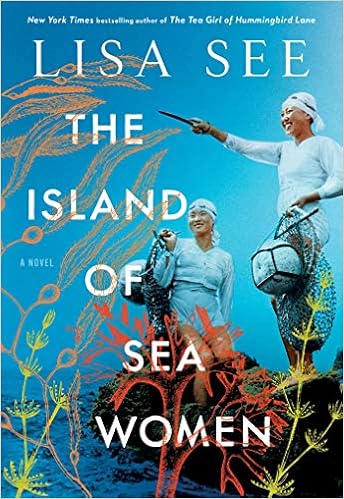This is a fascinating novel which introduced me to the haenyeo, female divers on the South Korean island of Jeju. These women breath-hold dive to great depths in frigid waters to harvest seafood like oysters, abalone, octopus, squid, and sea urchins, slugs and cucumbers.
The duration of the
novel is 70 years, from 1938 to 2008.
Young-sook, an 85-year-old woman living in Jeju, is approached by an
American woman who has a picture of her grandmother Mi-ja who was also from the
island. Young-sook denies knowing Mi-ja and
flees from the family. The narrative
then flashes back to the past where Young-sook and Mi-ja, girls from very
different backgrounds, become inseparable friends and diving partners. They even travel to Vladivostok to dive there
before marriages are arranged for them and they begin families on Jeju. Much of the interest in the book lies in the
reader wanting to find out what caused the break in such a close friendship, a
break so drastic that Young-sook doesn’t even want to talk to Mi-ja’s
descendants.
Though I knew about
free-divers, I had never heard of haenyeo.
This book describes their work in great detail: their beliefs, rituals, and skills. Researchers have studied them and discovered
that “’the cold-water stress that the haenyeo endure is greater than for any
other human group in the world.’” Their
work is dangerous, so much so that the leader of a haenyeo collective reminds
the women that “’Every woman who enters the sea carries a coffin on her back .
. . We are crossing between life and death every day.’”
I also found Jeju’s matrifocal
culture interesting: “’not a
matriarchy. Rather, it’s a society focused on women’” where men “’live in a household that depends on the
tail of a skirt.’” The women are the
breadwinners, supporting their families by diving. “’Given the dominance on Jeju of volcanic
cones, which are concave at the top like
a woman’s private parts, it is only natural that on our island females call and
males follow.’” The husband’s “only
responsibilities are to take care of babies and do a little cooking.” Besides harvesting the wet fields of the ocean,
the women also maintain gardens, dry fields:
“it’s a well-known fact that men’s knees are too stiff for this work,
and they are shy around sickles and hoes.”
The women work hard but have independence because their husbands have no
say in “what a woman could or could not do, say or not say.”
There is humour in the
women’s descriptions of their husbands as lazy and weak: “No man was built to shoulder the full weight
of feeding and caring for his family.
That was why he had a wife and daughters.” They mock “man’s sensitive ears’ and “the
sentimentality of a man.” Haenyeo talk
about what they don’t want in a husband:
“’I don’t want a husband with puny thoughts. I won’t tolerate a husband who needs scolding
- Or requires constant attention to know I care for him.’”
Characterization is
outstanding, especially that of Young-sook who emerges as a memorable character. Being a haenyeo requires her to be physically
strong (“it typically took two [men] to carry what a haenyeo brought ashore”)
but also mentally strong, independent, determined, and brave. Young-sook is all of these but her stubbornness
proves to be both a positive and negative quality. She finds forgiveness difficult and chooses
to remain angry and bitter. Nonetheless,
given what losses she suffers, her behaviour is realistic and
understandable.
The novel examines
friendship, betrayal, and forgiveness.
It also looks at how political conflicts led by men impact the lives of
women and children and their closest relationships. Readers should be warned that the depths of
human cruelty are detailed, especially in descriptions of the Jeju Uprising,
what Young-sook calls the 4.3 Incident. This is surely one of history’s least-known
massacres; for almost fifty years after the uprising, it was a crime punishable
by beatings, torture and a lengthy prison sentence if any South Korean even mentioned
the events of the Jeju Uprising in which tens of thousands were killed. Only this past April did South Korean police
and defense ministry apologize for the massacres.
This is historical
fiction at its best. The author did
extensive research and provides the reader with information about little-known
cultures and historical events. In addition,
the book has a compelling plot, memorable characters, and thematic depth. Like a haenyeo, take a deep breath and dive
in!

No comments:
Post a Comment